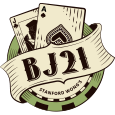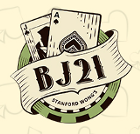Tournament Match Play, Late Going

Casino games tournaments are fun, and they can be profitable too. In upcoming articles, we will continue to publish a series of excerpts from Stanford Wong’s book, Casino Tournament Strategy. Various types of tournaments are held in land-based casinos, such as in Las Vegas, as well as in online casinos.
In the Late Going
You want to get the lead, and once you have it you want to keep it.
If You Are Behind
Try to take the lead by getting a sufficient difference in bets. For example, if you are 20 behind and your opponent bets 50, you should bet either less than 30 or more than 70. Losing hands are more common than winning hands so it is easier to get a swing by betting less than your opponent bets, hoping that both bets lose to put you ahead in the match. But if your opponent bets small, then bet big enough so that if both bets win you are ahead in the match. Make your catch-up bet when you are betting second, and play your normal game when you are betting first.
If you need a bigger swing than what you can get with the difference in bets, be willing to play the hand differently than your opponent plays it, even if your play violates basic strategy, hoping that person loses while you win. For example, suppose you are behind 300 to 100, your opponent bets 50, and you follow with your whole 100. If the player hand is sixteen against 8 and your opponent signals for a hit, you stand. If your opponent signals stand, you hit. If you luck out and win while your opponent loses, you are behind by only 250 to 200.
If You Are Ahead
The value of your lead increases in steps at half-max-bet intervals. Max bet means the most your opponent can bet. Your probability of winning the match is approximately the same whether you have a lead of one chip or almost half a max bet; but if your lead is more than half a max bet, then your probability of winning goes up significantly. Therefore, if you are ahead by less than half a max bet, you should be willing to jeopardize almost all of your lead in attempt to stretch your lead to half a max bet. Likewise, if you are ahead by more than half a max bet but less than a max bet, you should be willing to jeopardize part of your lead to try to get a full max bet ahead.
When you have the lead and you bet first, bet up to the amount of your lead less a chip or up to half the amount of your opponent’s bankroll, whichever is less. Make a bet that gives your opponent the most difficulty in overtaking you.
Whenever you play second, make a bet such that whether it wins or loses you will still have the lead. The easiest thing is to simply match your opponent’s bet.
If your opponent makes a huge bet, figure out if you can make a bet such that you will have more than twice as many chips left if the player hand loses, and still be ahead if the player hand wins. For example, if you are leading by 700 to 500 and your opponent bets 250, hold back 510 and bet 190. If both bets lose, you are ahead 510 to 250, which is a huge lead at match play blackjack. If both bets win, you are still ahead, but only 890 to 750.
An extreme example is if your opponent bets ahead of you, and goes all in. Keep back one chip and bet the rest of your bankroll. Then play the cards exactly the same way your opponent plays them. If the player hand loses, the match is over and you win, one chip to zero. If the player hand wins, your opponent’s bankroll is doubled and yours is almost doubled; therefore, your opponent is no better off if the player hand wins, but is considerably worse off if the player hand loses.
If your opponent has made a huge bet but you cannot keep more than twice as many chips as that person keeps and still stay ahead if the player hand wins, do the arithmetic to see if you can keep back 50% more than your opponent keeps back and still stay ahead if the player hand wins. If you cannot stay ahead with a win of that bet, or if you cannot do the arithmetic due to time constraints or pressure, then simply match your opponent’s
bet. For example, suppose you are leading by 600 to 500 and your opponent bets 250. Do not hold back 510 and bet 90, because if the player hand wins you are BR2. It is better to hold back 380 and bet 220; you would prefer to see the player hand lose, because then you have a lead of more than half a max bet. Alternatively, bet 250 to match your opponent’s bet.
In the late going, also match your opponent’s play of the cards. If your opponent misplays a hand, you misplay it the same way to maintain your lead.
This article is part of a series, to be continued…
Excerpted with permission from Casino Tournament Strategy by Stanford Wong, edited for this format.












Please log in or register to leave a comment